Monthly Updates on Recent Books in the History of Christianity
To raise awareness of recent books in the history of Christianity, the editorial staff of Church History: Studies in Christianity and Culture highlights each month a list of 10-15 books in diverse periods and geographical regions that we hope will be of interest to our members. We include here below the twentieth monthly list, chosen by our staff, with excerpts from the publishers’ blurbs.
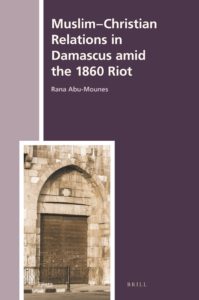
Rana Abu-Mounes, Muslim-Christian Relations in Damascus and the 1860 Riot. 2022
On 9 July 1860 CE, an outbreak of violence in the inner-city Christian quarter of Damascus created shock waves locally and internationally. This book provides a step-by-step presentation of events and issues to assess the true role of all the players and shapers of events. It critically examines the internal and external politico-socio-economic factors involved and argues that economic interests rather than religious fanaticism were the main causes for the riot of 1860. Furthermore, it argues that the riot was not a sudden eruption but rather a planned and organized affair.
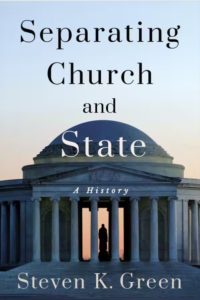
Steven K. Green, Separating Church and State: A History. 2022
In 1802, President Thomas Jefferson distilled a leading idea in the early American republic and wrote of a wall of separation between church and state. That metaphor has come down from Jefferson to twenty-first-century Americans through a long history of jurisprudence, political contestation, and cultural influence. This book traces the development of the concept of separation of church and state and the Supreme Court's application of it in the law.
Green finds that conservative criticisms of a separation of church and state overlook the strong historical and jurisprudential pedigree of the idea. Yet, arguing with liberal advocates of the doctrine, he notes that the idea remains fundamentally vague and thus open to loose interpretation in the courts. As such, the history of a wall of separation is more a variable index of American attitudes toward the forces of religion and state.
Indeed, Green argues that the Supreme Court's use of the wall metaphor has never been essential to its rulings. The contemporary battle over the idea of a wall of separation has thus been a distraction from the real jurisprudential issues animating the contemporary courts.
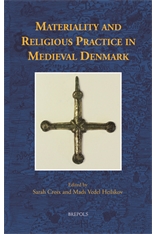
Sarah Croix and Mads Vedel Heilskov, eds. Materiality and Religious Practice in Medieval Denmark. 2021
From bread and wine to holy water, and from oils and incense to the relics of saints, the material objects of religion stood at the heart of medieval Christian practice, bridging the gap between the profane and the divine. While theoretical debates around the importance of physicality and materiality have animated scholarship in recent years, however, little attention has been paid to finding solid, empirical evidence upon which to base such discussions.
Taking medieval Denmark as its case study, this volume draws on a wide range of different fields to explore and investigate material objects, spaces, and bodies that were employed to make the sacred tangible in the religious experience and practice of medieval people. The contributions gathered here explore subjects as diverse as saints’ relics, sculptures, liturgical vessels and implements, items used for personal devotion, gospel books, and the materiality of Christian burials to explore the significance of objects that moved the souls, bodies, hearts, and minds of the faithful. In doing so, they also open new insights into religion and belief in medieval Denmark.
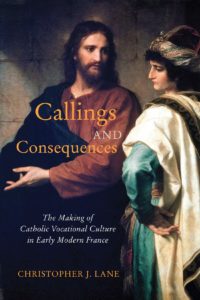
Christopher J. Lane, Callings and Consequences: The Making of Catholic Vocational Culture in Early Modern France. 2021
McGill-Queen’s University Press
The concept of vocation in an early modern setting calls to mind the priesthood or religious life in a monastery or cloister; to be “called” by God meant to leave the concerns of the world behind. Beginning in the mid-seventeenth century, French Catholic clergy began to promote the innovative idea that everyone, even an ordinary layperson, was called to a vocation or “state of life” and that discerning this call correctly had implications for one’s happiness and salvation, and for the social good. In Callings and Consequences Christopher Lane analyzes the origins, growth, and influence of a culture of vocation that became a central component of the Catholic Reformation and its legacy in France. The reformers’ new vision of the choice of a state of life was marked by four characteristics: urgency (the realization that one’s soul was at stake), inclusiveness (the belief that everyone, including lay people, was called by God), method (the use of proven discernment practices), and liberty (the belief that this choice must be free from coercion, especially by parents). No mere passing phenomena, these vocational reforms engendered enduring beliefs and practices within the repertoire of global Catholic modernity, even to the present day. An illuminating and sometimes surprising history of pastoral reform, Callings and Consequences helps us to understand the history of Catholic vocational culture and its role in the modernizing process, within Christianity and beyond.

Anneke H. Stasson, Walter and Ingrid Trobisch and the Globalization of Modern, Christian Sexual Ethics. 2021
Walter and Ingrid Trobisch played a major role in shaping a transcultural conversation about love, sex, gender identity, and marriage during the mid-twentieth century. The Trobisches are most well known for Walter's book I Loved a Girl (1962), which he wrote while teaching at Cameroon Christian College. Within a decade, one million copies of the book were in circulation, it was translated into seventy languages, and Trobisch had received ten thousand letters from African and American readers of the book asking for relational advice. The Trobisches founded an international marriage-counseling ministry to answer these letters. While the Trobisches held paternalistic attitudes common among western missionaries of their generation, their vision of sexuality helped Christians in Africa and the United States to navigate changing sexual norms of the mid-twentieth century.
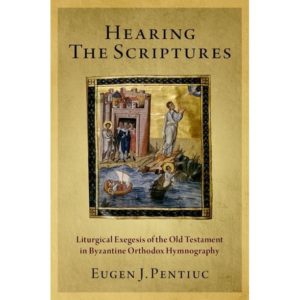
Eugen J. Pentiuc, Hearing the Scriptures: Liturgical Exegesis of the Old Testament in Byzantine Orthodox Hymnography. 2021
This book explores a specific area of “reception history”: Byzantine hymnography’s use and interpretation of Scriptures, primarily the Old Testament (Septuagint), as part of Orthodox tradition. Lexical-biblical-theological analyses of selected Holy Week hymns show the distinctiveness of “liturgical exegesis” (hymnographic biblical interpretation) and its complementarity to “patristic exegesis.” Even though patristic exegesis and liturgical exegesis are closely interrelated in terms of authorship and basic methodology, this volume seeks to show the main dissimilarities between patristic (i.e., discursive) and liturgical (i.e., imagistic or intuitive) modes of biblical interpretation. The book aims to demonstrate the creativeness of “pre-critical” interpreters of the Bible, i.e., the Byzantine hymnographers. The volume’s introduction sums up the most important moments in the emergence of Byzantine Orthodox Holy Week, as well as the current structure of this liturgical cycle, with an emphasis on Byzantine hymnography. Part I of the book is a collection of lexical-biblical-theological analyses of selected Holy Week hymns spread over six days (and six chapters). The Holy Week hymnography was chosen as a case study for the rich and vast Byzantine hymnography. The analyses show different ways the Byzantine liturgists (i.e., hymnographers) incorporated and interpreted scriptural material, primarily Old Testament, in their hymns. Part II deals with liturgical exegesis and its key features and hermeneutical procedures. It also seeks to underline the differences between patristic biblical commentaries and Byzantine hymns, while advancing an analogy between liturgical exegesis and cubist art.

John Witte, Jr. The Blessings of Liberty: Human Rights and Religious Freedom in the Western Legal Tradition. 2022
Leading legal scholar John Witte, Jr. explores the role religion played in the development of rights in the Western legal tradition and traces the complex interplay between human rights and religious freedom norms in modern domestic and international law. He examines how US courts are moving towards greater religious freedom, while recent decisions of the pan-European courts in Strasbourg and Luxembourg have harmed new religious minorities and threatened old religious traditions in Europe. Witte argues that the robust promotion and protection of religious freedom is the best way to protect many other fundamental rights today, even though religious freedom and other fundamental rights sometimes clash and need judicious balancing. He also responds to various modern critics who see human rights as a betrayal of Christianity and religious freedom as a betrayal of human rights.
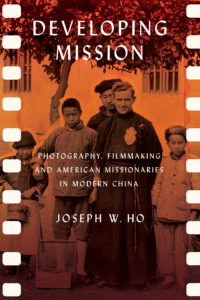
Joseph W. Ho, Developing Mission: Photography, Filmmaking, and American Missionaries in Modern China. 2021
In Developing Mission, Joseph W. Ho offers a transnational cultural history of US and Chinese communities framed by missionary lenses through time and space―tracing the lives and afterlives of images, cameras, and visual imaginations from before the Second Sino-Japanese War through the first years of the People's Republic of China.
When American Protestant and Catholic missionaries entered interwar China, they did so with cameras in hand. Missions principally aimed at the conversion of souls and the modernization of East Asia, became, by virtue of the still and moving images recorded, quasi-anthropological ventures that shaped popular understandings of and formal foreign policy toward China. Portable photographic technologies changed the very nature of missionary experience, while images that missionaries circulated between China and the United States affected cross-cultural encounters in times of peace and war.
Ho illuminates the centrality of visual practices in the American missionary enterprise in modern China, even as intersecting modernities and changing Sino-US relations radically transformed lives behind and in front of those lenses. In doing so, Developing Mission reconstructs the almost-lost histories of transnational image makers, subjects, and viewers across twentieth-century China and the United States.
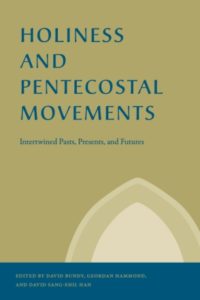
David Bundy, Geordan Hammond, David Sang-Ehil Han, eds. Holiness and Pentecostal Movements: Intertwined Pasts, Presents, and Futures. 2022
Pennsylvania State University Press
Since the 1830s, Holiness and Pentecostal movements have had a significant influence on many Christian churches, and they have been a central force in producing what is known today as World Christianity. This book demonstrates the advantages of analyzing them in relation to one another.
The Salvation Army, the Church of the Nazarene, the Wesleyan Church, and the Free Methodist Church identify strongly with the Holiness Movement. The Assemblies of God and the Pentecostal Assemblies of the World identify just as strongly with the Pentecostal Movement. Complicating matters, denominations such as the Church of God (Cleveland), the International Holiness Pentecostal Church, and the Church of God in Christ have harmonized Holiness and Pentecostalism. This book, the first in the new series Studies in the Holiness and Pentecostal Movements, examines these complex relationships in a multidisciplinary fashion. Building on previous scholarship, the contributors provide new ways of understanding the relationships, influences, and circulation of ideas among these movements in the United States, the United Kingdom, India, and Southeast and East Asia.
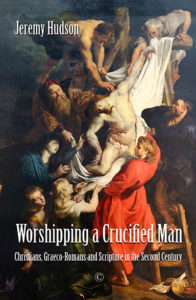
Jeremy Hudson, Worshipping a Crucified Man: Christians, Graeco-Romans and Scripture in the Second Century. 2021
By the mid-second century Christian writers were engaging in debates with educated audiences from non-Jewish Graeco-Roman cultural backgrounds. A remarkable feature of some of the texts from this period is how extensively they refer to the Jewish scriptures, even though those scriptures were unfamiliar to non-Jewish Graeco-Romans. In Worshipping a Crucified Man, Jeremy Hudson explores for the first time why this should have been so by examining three works by Christian converts originally educated in Graeco-Roman traditions: Justin Martyr’s First Apology, Tatian’s Oratio and Theophilus of Antioch’s Ad Autolycum. Hudson considers their literary strategies, their use of quotations and allusions and how they present the Jewish scriptures; all against the background of the Graeco-Roman literary culture familiar to both authors and audiences. The scriptures are presented as a critically defining feature of Christianity, instrumental in shaping the way the new religion presented itself, as it strove to engage with, and challenge, the cultural traditions of the Graeco-Roman world.
![]()
Mark Humphreys, ed. A Companion to Byzantine Iconoclasm. 2021
Few subjects have generated more argument in early medieval, Byzantine, and Orthodox history than Iconoclasm. Supposedly for more than a century the Orthodox Church and Byzantium were wracked by controversy over religious figural imagery, culminating in 843 in the establishment of icon veneration as a fundamental Orthodox practice. In this multidisciplinary Companion to Byzantine Iconoclasm, twelve contributors set the controversy in context and critically examine the key debates: what was the argument about? How much destruction and persecution were there? What caused and fueled the controversy? What links, if any, were there to events in the Islamic Caliphate and the Latin West? And how can we use our contested literary and material sources to offer answers to these questions?
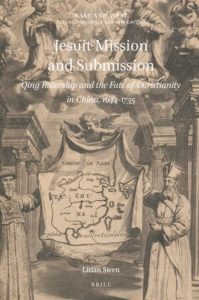
Litian Swen, Jesuit Mission and Submission: Qing Rulership and the Fate of Christianity in China, 1644-1735. 2021
Jesuit Mission and Submission explains how the Jesuits entered the Manchu world after the Manchus conquered Beijing in 1644. Supported by Qing court archives, the book discovers the Jesuits’ Manchu-style master-slave relationship with the Kangxi emperor. Against the backdrop of this relationship, the book reconstructs the back and forth negotiations between Kangxi and the Holy See regarding Chinese Rites Controversy (1705-1721), and shows that the Jesuits, although a group of foreign priests, had close access to Kangxi and were a trusted part of the Imperial circle. This book also redefines the rise and fall of the Christian mission in the early Qing court through key events, such as the Calendar Case and Yongzheng’s prohibition of Christianity.
Finally, for staying up-to-date on the latest titles in all fields, we recommend regularly perusing New Books Network and its "New Books in Christian Studies” page. These pages are updated regularly.
